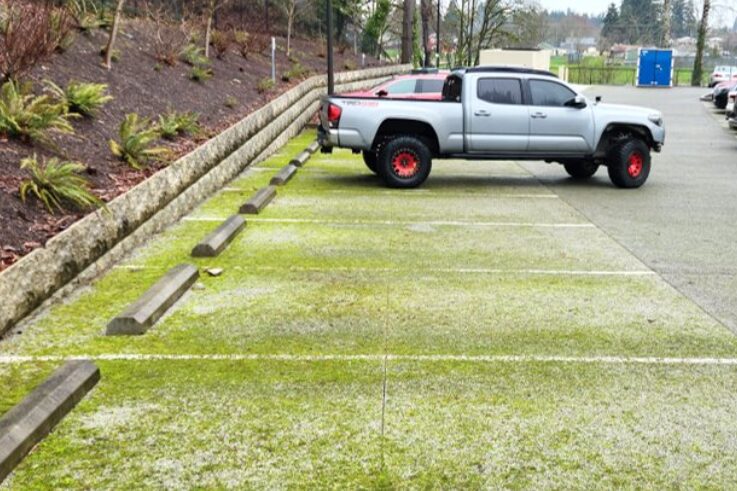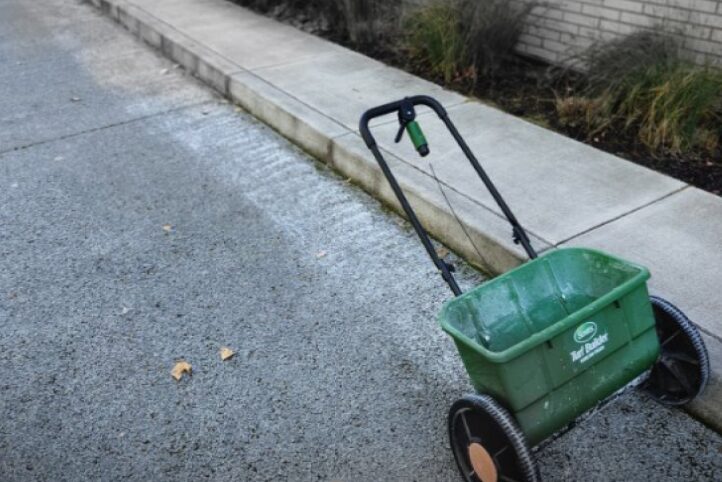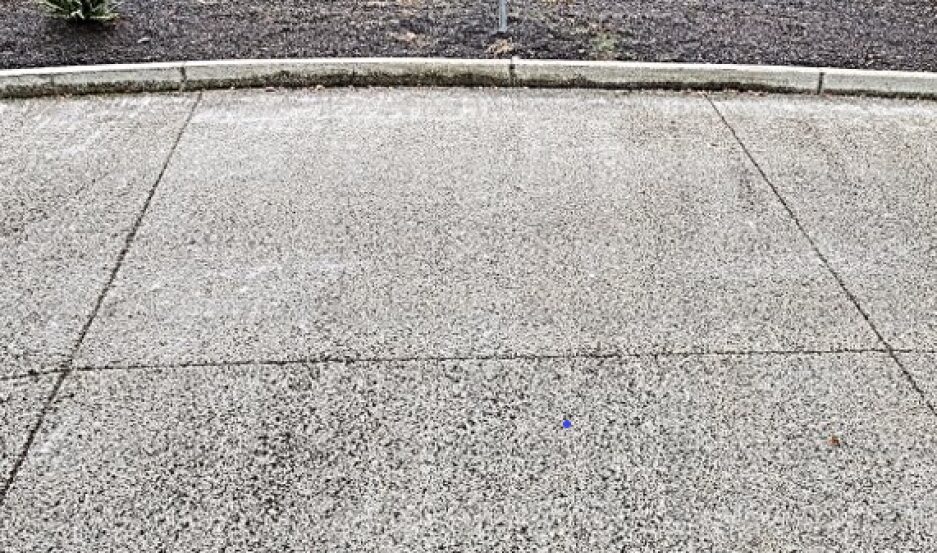


has not regrown.
Even with the best of site design and maintenance, moss prevention, control, and removal will probably be a concern. In climates prone to moss growth, leaf-blowing and even professional sweeping will not prevent a covering of moss from forming. Adjacent trees and other foliage may add sediment load as well as drainage from asphalt streets. It is typical that shaded areas will be more impacted by moss than unshaded. If your pervious concrete requires treatment for moss, we have a proven solution.
Sodium Bicarbonate (baking soda) is the cheapest, easiest, and most effective way to kill and prevent moss on pervious surfaces like driveways and sidewalks. It can be used as a powder by spreading it – or mix 4 to 6 ounces with water to spray it on. If your parking lot, sidewalk, or driveway starts to look green in the winter, it’s because the dark days and wet weather create a perfect environment for moss. Moss grows best on surfaces with a pH of 5-6, while baking soda has a pH of 9. This means baking soda not only kills moss right away but is also safe for the environment. However, use caution near some types of vegetation that may not be resilient to soda.
To get rid of heavy moss, you’ll need to use a pressure washer with a “Turbo” nozzle. This method works well but can be pricey. If you decide to pressure wash, wait until summer when there is less debris, making the job quicker and easier.
Instead of removing moss, it’s better to prevent it. Apply baking soda by the end of October or as soon as you see moss starting to grow. Keeping your pavement clear of moss will significantly reduce debris and can help you avoid the need for pressure washing for many years. Baking soda is available in bulk at your local farm stores. A 50-pound bag should treat approximately 1900 square feet of pervious concrete.
NOTE: Do Not use bleach, agriculture lime, or vinegar to clean pervious or standard concrete.
